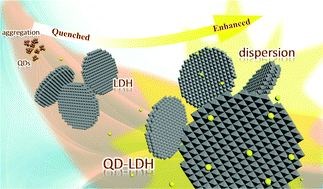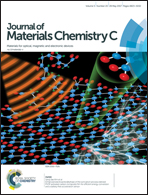A novel luminescence probe based on layered double hydroxides loaded with quantum dots for simultaneous detection of heavy metal ions in water†
Abstract
As most heavy metals are highly toxic upon accumulation in the human body, it is urgent to develop accurate, low-cost, and on-site methods to detect multiple heavy metal ions in real water samples. Quantum dots (QDs) are an approved choice for use in sensors and exhibit favorable luminescence in aqueous solution, but they often become quenched when isolated from their suspensions due to agglomeration. Therefore, QDs must exist in a solid state in order to be successfully applied to luminescence detection. This work reports the fabrication of a novel luminescence composite based on glutathione-capped Mn-doped ZnS quantum dots (GSH-Mn-ZnS QDs) and layered double hydroxides (LDH). The composite is solid and exhibits enhanced luminescence intensity, as the structure of LDH prevents the aggregation of QDs. Most importantly, it exhibits a similar response when used as a sensor for detecting Pb2+, Cr3+ and Hg2+ with a linear range of 1 × 10−6 M to 1 × 10−3 M for each heavy metal, and a detection limit for the mixed metal ions of 9.3 × 10−7 M. In addition, the composite was successfully applied for detection in lake water with low interference. Therefore, a practical method is presented for the design and fabrication of a QD–LDH composite that can be used for qualitative and quantitative testing of mixed heavy metal ions simultaneously in real water samples.



 Please wait while we load your content...
Please wait while we load your content...